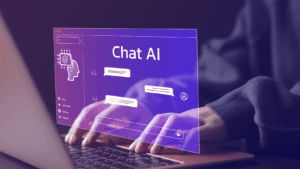Artificial Intelligence (AI) is rapidly transforming industries, and roofing is no exception. While the roofing sector has traditionally been slow to adopt cutting-edge technologies, the integration of AI is becoming increasingly inevitable. As AI continues to evolve, roofing contractors will need to understand both the opportunities it presents and the potential risks associated with it.
 The Benefits of AI in Roofing
The Benefits of AI in Roofing
AI has the potential to streamline many aspects of the roofing industry, from improving customer service to optimizing daily operations.
-
Enhanced Efficiency in Administrative Tasks
AI can automate routine tasks such as time tracking, payroll, and data entry. For example, many contractors are still manually tracking hours or inputting data into spreadsheets. AI can eliminate these repetitive processes, allowing roofers to focus on more critical tasks. By automating timekeeping and report generation, AI can significantly reduce human error and save countless hours.
-
Accurate Estimates and Faster Project Management
One of the most exciting applications of AI in roofing is its ability to provide accurate estimates. AI-powered tools can analyze drone imagery or previous project data to generate precise measurements and cost estimates. This not only speeds up the bidding process but also ensures that estimates are as accurate as possible. Additionally, AI can help in managing multiple projects simultaneously by automating scheduling and tracking materials, further reducing overhead costs.
-
AI in Customer Service and Marketing
 AI chatbots are already being utilized in other service industries and could be a game-changer for roofing contractors. These bots can handle customer inquiries 24/7, providing information about services, scheduling appointments, or even offering project updates. AI-driven marketing tools can also help contractors reach a wider audience by targeting the right customers at the right time, improving lead generation and conversion rates.
AI chatbots are already being utilized in other service industries and could be a game-changer for roofing contractors. These bots can handle customer inquiries 24/7, providing information about services, scheduling appointments, or even offering project updates. AI-driven marketing tools can also help contractors reach a wider audience by targeting the right customers at the right time, improving lead generation and conversion rates.
 The Risks and Challenges of AI Adoption
The Risks and Challenges of AI Adoption
Despite its many advantages, there are also potential risks to adopting AI in roofing.
-
Slow Industry Adoption
The roofing industry has historically been slow to adopt new technologies, and AI is no exception. Many contractors still rely on paper-based systems for time tracking and invoicing, and there may be resistance to transitioning to AI-driven processes. For AI to be effective, contractors must be willing to invest in training and infrastructure to support it.
-
Data Security Concerns
 As AI becomes more integrated into roofing businesses, data security becomes a significant concern. AI relies on vast amounts of data to function, and sensitive customer or project information could be at risk if not properly managed. Contractors will need to ensure that any AI systems they adopt come with strong data protection protocols to safeguard against breaches.
As AI becomes more integrated into roofing businesses, data security becomes a significant concern. AI relies on vast amounts of data to function, and sensitive customer or project information could be at risk if not properly managed. Contractors will need to ensure that any AI systems they adopt come with strong data protection protocols to safeguard against breaches. -
Dependence on AI and Loss of Human Touch
While AI can handle repetitive tasks efficiently, over-reliance on it can lead to a loss of personal interaction with clients. Roofing is still a business where customer relationships are vital. Relying too heavily on AI for customer service might result in a lack of human connection, which could negatively affect customer satisfaction.
 The introduction of AI into the roofing industry offers exciting opportunities for increased efficiency, better customer service, and more accurate project management. However, it is not without risks. Contractors will need to carefully consider how they integrate AI into their business to maximize its benefits while mitigating the potential downsides. As AI technology continues to evolve, the roofing industry has the opportunity to transform—those who embrace it will likely find themselves ahead of the curve.
The introduction of AI into the roofing industry offers exciting opportunities for increased efficiency, better customer service, and more accurate project management. However, it is not without risks. Contractors will need to carefully consider how they integrate AI into their business to maximize its benefits while mitigating the potential downsides. As AI technology continues to evolve, the roofing industry has the opportunity to transform—those who embrace it will likely find themselves ahead of the curve.




